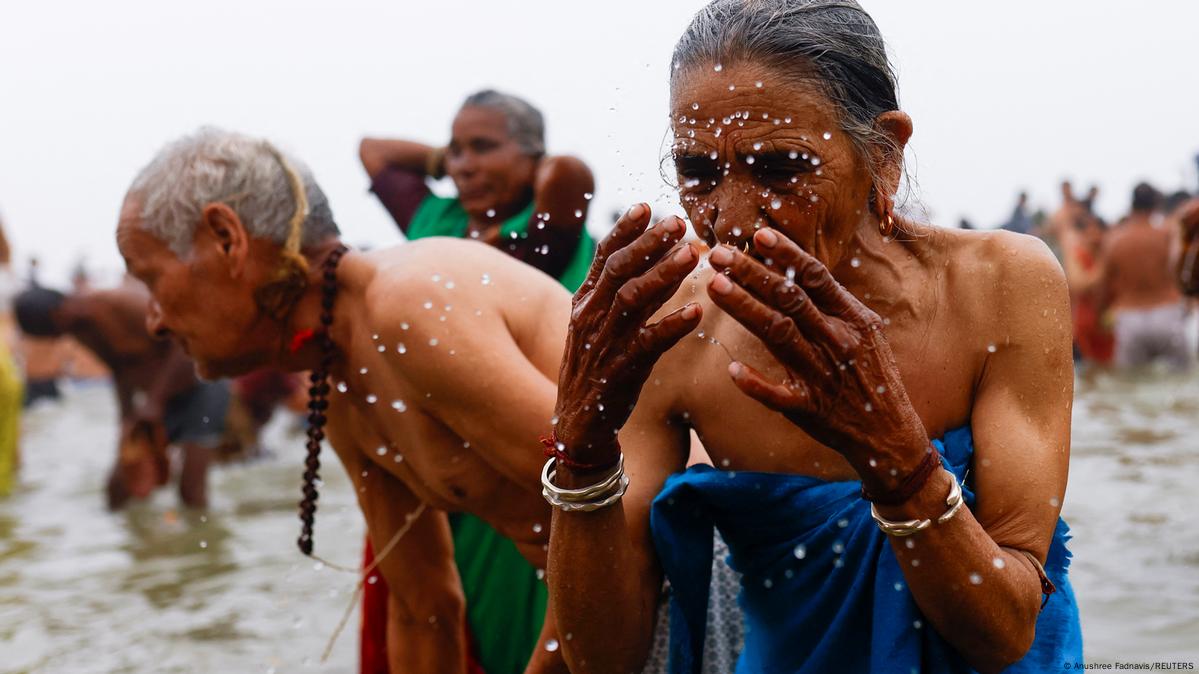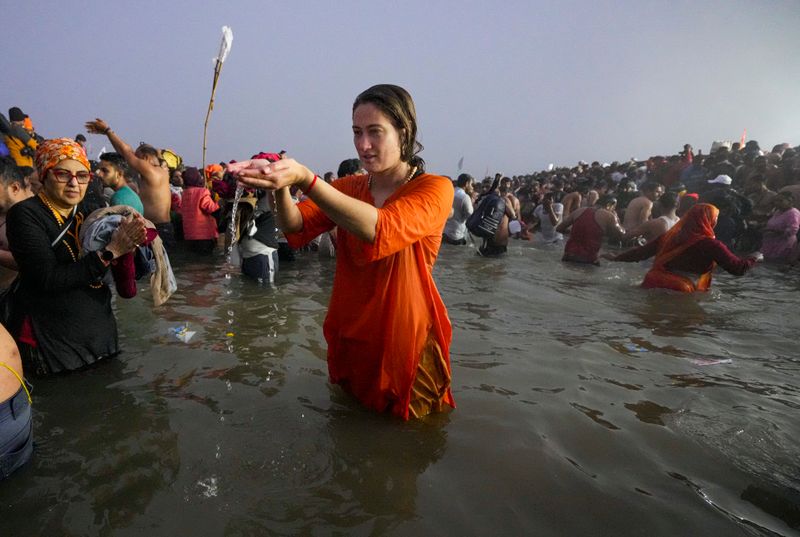The Maha Kumbh is a sacred gathering of faith, devotion, and spiritual transcendence. But in a disturbing reflection of societal decay, it has also become a hunting ground for the most vile and depraved corners of the internet.
Women devotees, in their most vulnerable moments, have been filmed, photographed, and commodified—turned into nothing more than illicit content for social media profiteers. This is not only an issue of privacy invasion; it is a grotesque assault on dignity, faith, and humanity.
The Exploitation of Faith in the Digital Age
The Uttar Pradesh Police have initiated legal proceedings against two social media accounts accused of sharing and selling explicit videos and images of women pilgrims bathing and changing clothes at the ongoing Maha Kumbh Mela in Prayagraj. This incident is more than just a law-and-order problem—it solidifies the notion of moral rot festering within society.
Reports reveal that these videos have been circulating on platforms like Facebook, Instagram, and Telegram. Some are brazenly marketed with captions such as “Maha Kumbh Ganga Snan Prayagraj,” accompanied by hashtags like #mahakumbh2025, #gangasnan, and #prayagrajkumbh to maximize reach.
A more damning revelation is that these clips are not just being shared but sold—monetized as explicit content, with prices ranging from Rs 1,999 to Rs 3,000 per access.
According to analytics from Telemetrio, a Telegram search engine, there was a noticeable surge in the term “open bathing” in India between February 12 and 18. The demand for such perverse content reflects an uncomfortable truth—there is an active consumer base fueling this violation of women’s dignity and worse, is not an isolated act of voyeurism; it is an organized, systematic exploitation that preys on religious sanctity and human vulnerability.
Crackdown by Authorities. A Step Too Late?
In response to these violations, a case was filed on February 17 against an Instagram account found sharing such exploitative content, followed by another case on February 19 after a Telegram channel was discovered selling similar videos. The Uttar Pradesh police, under the directive of DGP Prashant Kumar, have taken legal action, and investigations are underway at the Kotwali Kumbh Mela police station. Meta, the parent company of Instagram, has been approached for information on the perpetrators.
But one must ask—why did it take so long for authorities to act? Why was such content able to gain traction in the first place?
If platforms like Meta can swiftly crack down on political dissent and remove posts within minutes, why do they fail when it comes to women’s safety? The sale of such content did not happen overnight; it required digital transactions, engagement, and an entire network of online enablers. This is not about individual perpetrators only—it is about the failure of social media giants to proactively curb such exploitation.

A Society That Consumes Exploitation Is Complicit in It
Beyond law enforcement, the real question is—how did we get here?
The Maha Kumbh, a festival where devotees seek purification, has been reduced to a feeding ground for predatory digital voyeurs. The normalization of voyeurism, the collective indifference towards women’s safety, and the commodification of their bodies in both physical and digital spaces are symptoms of a deeper, more insidious sickness in society.
We live in a time where religion is often spoken of first, rather than humanity. We bow down to our gods, offer prayers, and chant sacred verses, but the real measure of our devotion should be in the way we treat our fellow humans.
Yet, instead of reverence, we see women being stripped of their dignity at these very sites of worship. Worse still, who knows if it is just women—perhaps young boys, or anyone who is vulnerable, is also being exploited. When a religious festival meant for spiritual cleansing turns into a marketplace for voyeuristic filth, it nullifies the very reason why crores of people come to Prayagraj for the ‘holy dip.’ For some, that dip has cost them their dignity.
Religious sites, which should be the purest spaces, are instead being turned into cesspools of filth—both literal and figurative. We speak of faith, yet we leave these sacred places polluted, trashed, and defiled. We preach morality, yet allow acts of deep immorality to take place right under our noses. If the true essence of religion is lost in our conduct, then what remains is merely ritual, empty of soul and substance.

What Needs To Be Done
- Stronger Digital Policing: Social media platforms must be held accountable for their role in enabling such exploitation. They have the technology to flag and remove inappropriate content but often lack the will to act until public outrage forces their hand.
- Swifter Law Enforcement Action: Cases like these should not take days to be noticed. There must be stringent digital monitoring, especially during massive public gatherings like the Maha Kumbh, to prevent such incidents from occurring in the first place.
- Legal Consequences for Consumers of Such Content: Those who buy, share, or even encourage such material should face strict legal repercussions. If demand exists, supply will always find a way.
- Societal Introspection: We must ask ourselves—why does content like this have an audience? Until we address the normalization of voyeurism and exploitation, laws alone will not suffice.
The Last Bit. The Death of Dignity in the Digital Age
More than 56 crore devotees have already taken the holy dip at the Maha Kumbh, faith and devotion. But while some seek salvation, others lurk in the shadows, waiting to turn spirituality into a spectacle for profit. If we do not act decisively—both legally and morally—then truly, we are living in ‘Kal Yug,’ of digital consumption, where even the holiest of places cannot shield a seeker or a devotee from the prying eyes of a perverse and failing society.
Are we willing to stop this now.